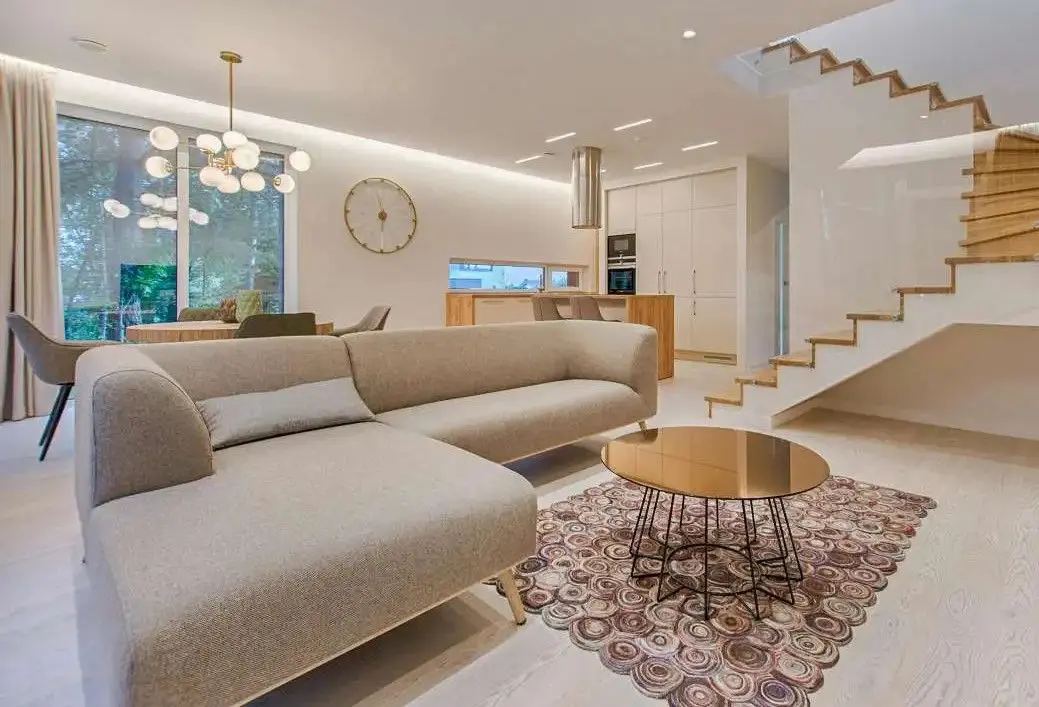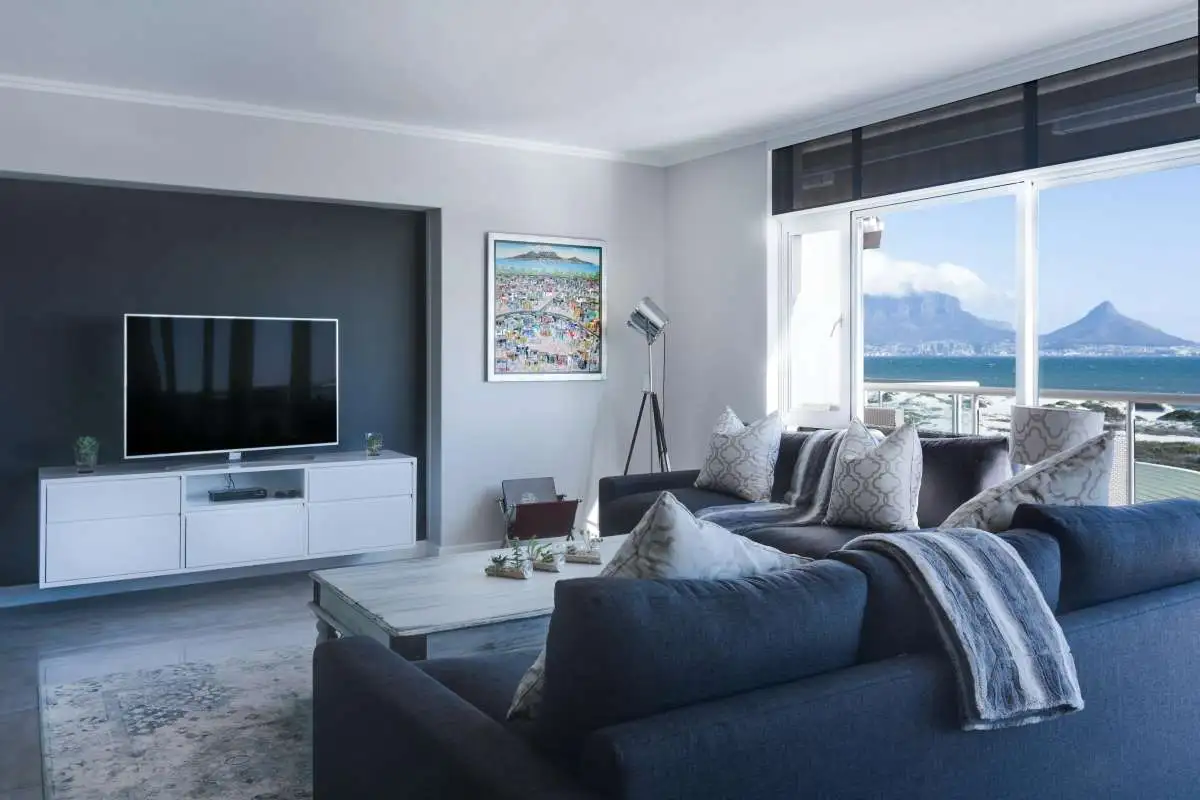Beyond Virtual Staging: The Future of Interactive Home Sales


Discover cutting-edge tech that helps buyers do more than look at photos. Learn how AR, 360 tours & AI are changing the game!
Home staging has come a long way. Remember when ensuring a house was clean and clutter-free felt revolutionary? Then, virtual staging allowed empty rooms to look inviting with the click of a mouse. But today's market demands even more to truly wow potential buyers. Technology isn't just about making a house look nice; it's about unlocking a deeper emotional response.
Imagine if buyers could do more than just glance at photos—what if they could virtually step inside and explore at their own pace? What if they could see how their own furniture might fit or envision a totally new design with a few taps on their phone?
That's not some futuristic dream; it's the reality of interactive home showcasing. To stand out in today's competitive landscape, sellers and agents need to evolve. This isn't about replacing traditional methods but about layering cutting-edge technology onto the existing foundation. The result? Buyers don't just see a house – they experience it in a way that can turn curiosity into a strong desire to make it their own.

Source: OneToBeam
If you think virtual tours are just a series of still photos stitched together, think again. Modern 360-degree tours transform the online viewing experience into a seamless, interactive walkthrough. Special cameras capture every angle of a room, and then powerful software weaves them together. Buyers aren't just looking at pictures; they're virtually stepping inside your listing!
These tours let viewers control their exploration. They can "walk" from room to room, look up at the ceiling, or zoom in on details that catch their eye. It's about conveying the true sense of space and flow that's essential to buyers but often gets lost in traditional photos.

Source : OneToBeam
Augmented Reality (AR) brings a whole new dimension to staging, and it's incredibly accessible thanks to smartphones and tablets. In simple terms, AR lets you add a layer of digital information onto the real world as seen through your device's camera.
How does this translate to staging? Imagine a buyer walking through an empty living room and holding up their phone. With the right app, they can see that room instantly furnished – a stylish sofa here, a vibrant rug there, and artwork adding personality. This tackles the "can I picture my stuff here?" problem many buyers have and eliminates the guesswork of whether furniture will actually fit.
AR goes even further. It can allow buyers to try different furniture arrangements with a few taps, swap in a bold accent wall, or experiment with completely new design styles. It puts the power of visualization directly into their hands, creating excitement and making the home feel full of possibilities.

Source: OneToBeam
Feeling overwhelmed by the sheer number of design choices out there? That's where AI-powered staging recommendations come in. These clever tools aren't about replacing the expertise of an interior designer, but rather providing a springboard for those who feel a little lost.
Imagine software analyzing a room's dimensions, architectural details, and natural light, and then suggesting furniture, decor, and even color palettes that suit the space. These recommendations are curated, taking into account current trends and timeless design principles.
For buyers who might be intimidated by a blank canvas, these AI tools can be a huge confidence booster. They provide a starting point, open their minds to options they might not have considered, and help them see a simple room transform into a stylish, welcoming home. It's all about turning that initial 'like' into a deeper 'love' for the space itself.

Source : OneToBeam
It's important to remember that technology, no matter how advanced, is only a tool. It's the real estate agent who adds the essential human element to the showcasing process. Agents play a crucial role in understanding these new options and helping buyers navigate them with ease.
Not everyone will be equally tech-savvy. Some buyers will adore the ability to virtually style a room, while others might still crave the in-person experience. Successful agents will bridge this gap. They'll introduce interactive tours, offering guidance when needed. They'll be ready to use augmented reality during a showing to answer design questions or visualize a buyer's suggested changes.
It's about using technology strategically. A 360-degree tour creates that online buzz, but the in-person visit becomes enriched: questions are answered on the spot, possibilities are explored with a few taps, and a deeper connection to the property is fostered.

Source: OneToBeam
While these interactive technologies are incredibly exciting, it's important not to view them as a replacement for traditional showcasing methods. The most successful sellers and agents will master a strategic blend of the old and the new.
Imagine a 360-degree tour that gets buyers hooked the moment they encounter your listing. They've virtually strolled through, getting excited about the home's potential. The in-person visit then becomes even more powerful. Agents can use AR to test out colors on the walls, answer design questions on the spot, and help buyers make decisions with confidence.
Technology doesn't eliminate the need for human interaction. Instead, it becomes a tool for providing a multi-layered, personalized experience that goes beyond basic photos or a staged room. It's this hybrid approach that will set listings apart in a competitive market.
The future of home showcasing is already here. If you're a seller, don't let your listing get lost among those relying on basic visuals. If you're an agent, become an expert in these technologies to elevate the experience you provide clients. Embrace interactive tools, and see firsthand how they fuel buyer excitement and lead to faster, more successful sales.
As we've explored throughout this blog, virtual staging is more than just a digital enhancement; it's a transformative tool that can significantly impact the success of real estate transactions in Singapore. The benefits of virtual staging - from elevating property appeal to reaching a broader audience and accelerating sales - are undeniable. In today's digital age, embracing virtual staging is not just an option; it’s a necessity for realtors looking to stay ahead in a competitive market.
Virtual staging brings properties to life, allowing potential buyers and renters to visualize their future homes. Whether it’s through detailed 3D virtual tours, realistic virtual staging real estate photography, or innovative virtual staging apps, the possibilities are endless. For realtors in Singapore, adopting these tools means staying relevant and appealing to a tech-savvy clientele, both locally and internationally.
Ready to transform your property listings and captivate your audience? Visit OnetoBeam.com to discover how our cutting-edge virtual staging solutions can elevate your real estate business. At OnetoBeam, we specialize in bringing the latest in virtual staging technology to Singapore's real estate market. Our team of experts combines artistic flair with technological prowess to create stunning, realistic property presentations.
Don't let your listings fade into the background. Let OnetoBeam help you showcase your properties in their best light, making every space a potential dream home for buyers and renters. Contact us today at OnetoBeam.com and take the first step towards revolutionizing your real estate listings with the power of virtual staging.